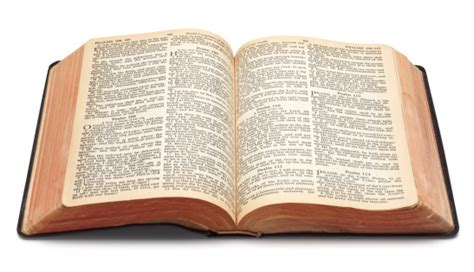Post 1 of 3
While thise thread is about King James blunders... I ran across the following and there is more about the King James then any other bible.
Some rather eye opening.
18 Alterations Made to the Bible and its Consequences - History Collection
18 Alterations Made to the Bible and its Consequences
Larry Holzwarth - August 20, 2018
To some, the Bible is the infallible and unchangeable word of God, written by Him and eternally sacrosanct. But which Bible? There are many different Bibles which contain different books within, and the several differing translations of those books has changed their content over the centuries. Verses have been added, removed, and modified to alter their meaning. Some have been simply forgeries, inserted for political and social reasons. Words which mean one thing in Greek or Hebrew have been given entirely different meanings by interpreters, sometimes out of ignorance, and sometimes out of plan.
When the Bible has been edited to modernize its language, for the purpose of making it more readily understood, its editors have used verses already modified from the original and modified them yet further. Entire verses have been moved and footnoted, changing the meaning of the original, not only to make it more readable to modern eyes, but to reflect the opinions and beliefs of the editors. This has been done despite the scriptural admonition against changing one word of the biblical prophecy, a verse which has itself been changed, its meaning altered, until another future editor decides to alter it yet again.
1. Acts 8:37 from the King James Version of the Bible confuses readers on requirements of Baptism – but sometimes this verse is omitted entirely!
In Acts chapter 8, the Apostle Philip preached the Gospel of Jesus to a eunuch, and when the two came to a “certain water”, the eunuch asked what “doth hinder me to be baptized?” Philip replied in Acts 8:37 (KJV); “And Philip answered, If though believest with all thine heart, thou mayest. And he answered and said, I believe that Jesus Christ is the Son of God.” Philip then baptized the eunuch in the ensuing verses, after which he was spirited away, so that the eunuch “saw him no more: and he went on his way rejoicing” (Acts 8: 39). Numerous later translations of the bible removed Acts 8:37 entirely, while others modify the story.
In the New International Version, for example, Acts 8:38 tells of Philip stopping the chariot in which they were traveling and baptizing the eunuch without responding to his question. The verse was removed in its entirety, though in some editions it is included as a footnote, stating that some versions of the bible contain the verse. The Jehovah’s Witness bible (NWT), the New American Standard Version (NASV) and the Revised Standard Version (RSV) all removed the verse from the King James Version. When the removal of the verse is not explained, it implies a change to the requirements for baptism, without delineating what those changes may be.
2. The Amplified Bible tries to improve readability by Inserting editorial comments and ideas throughout the text.
The Amplified Bible, produced the by Lockman Foundation, with assistance from Zondervan, a subsidiary of News Corps which holds the commercial rights for the New International Version of the Bible in the United States and Canada, was first published beginning in 1965.
Amplified means the addition of text to stress certain passages and by inference, reducing the importance of other text by the lack of such amplification. For example, in the KJV, Acts 16:31 reads, “And they said, Believe on the Lord Jesus Christ, and thou shalt be saved, and thy house.” The American Standard Version (ASV) of the same verse drops the title Christ, but otherwise the verse is very similar to the KJV.
In the amplified version, (which was revised in 2015 to make additional amplifications) the verse reads; “Believe in the Lord Jesus [as your personal Savior and entrust yourself to him] and you will be saved, you and your household, [if they also believe].” Thus the Amplified Bible not only alters the text and the translation of certain passages, but also inserts editorial comment. Punctuation alteration, such as the insertion of brackets which contain amplifying commentary, is used to stress certain verses, point out others which the authors claim to be inadequately justified by source documents, and improves readability.
3. Bible word counts differ substantially… Yet Revelations threatens God’s consequences if the text is altered.
The word counts of the complete Bible text differ, obviously between the different translations, and sometimes within editions of the same translation. For example, one source reports the New International Version as containing 727, 969 words, another claims the NIV’s word count as 726,109. The King James Version is 783,137 words; the New KJV is reported by the same word count source as containing 770,430 words. Obviously many words have been removed from different editions or versions of the bible, which renders them works of the editors and scholars which prepared them.
Why is this of any significance? Revelations 22:19 (KJV) reads; “And if any man shall take away from the words of the book of this prophecy, God shall take away his part out of the book of life, and out of the holy city, and from the things which are written in this book.” It can be argued that the ominous warning in the verse applies only to the Book of Revelations in which it appears, but it still seems clear that modifying the book by addition or subtraction is a punishable offense. The same verse appears with different wording and phrasing in other translations. The Amplified Bible takes the modification a great deal further.
4. Amplified Bible Alterations also warn and threaten consequences to taking away from the text of the Bible.
The same verse referenced above, Revelations 22:19, appears in the Amplified Bible thus; “And if anyone cancels or takes away from the statements of the book of this prophecy – these predictions relating to Christ’s kingdom and its speedy triumph, together with the consolations and admonitions (warnings) pertaining to them – God will cancel and take away from him his share in the tree of life and in the city of holiness (pure and hallowed) which are described and promised in this book.” The additions to the verse are easily seen, and the result is the publication of an opinion based not on the words of the original text but on the beliefs of the editor.
Such changes to the source text are prevalent in all known versions of the Bible, including the King James Version, which is known for the virulence of some of its defenders. Some of these claim that all other versions of the Bible are false, little more than forgeries, and that the King James Version is the only version of the Bible which should be used. In doing so they ignore the many errors of translation between the original source documents, as well as the clear insertion of additional verses many years after the original documents were written. The Amplified Bible makes clear that the book is intended to be taken literally.
5. Changes to the Gospel of Mark give Christians instructions… But these instructions come from an unknown author.
In the King James Bible, the Gospel of Mark ends with 16:20, “And they went forth, and preached everywhere, the Lord working with them, and confirming the word with signs following. Amen.” Most translations of Mark follow the KJV, with varying verbiage for the verses of chapter 16, which closely follow the Gospel of Luke. They appear to have been added by an unknown author or authors other than the original author of Mark, based on the oldest known manuscripts of the work. The oldest extant copies of Mark end at 16:8, and there are numerous copies which indicate the work ended there. One is the Sinaitic copy, circa 370 CE, another is the Vatican copy, circa 325 CE.
There are many theories regarding the gospel stopping abruptly after 16:8, as well as when the additional verses were added. The additional verses describe the Ascension, and are included in the KJV without subsequent commentary, though many newer translations contain notes pointing out the unknown provenance of the subsequent verses after 16:8. Much of the later verses refer to the criteria for salvation (which differ from elsewhere in the Bible), proselytization, and the
Great Commission, the command from Jesus to preach the word to all. The Great Commission is to many fundamentalists their Prime Directive, unaware that it was a later addition to the Gospel and of unknown origin.
6. Changes to Matthew and the Lord’s Prayer first appear in Byzantine texts – which is much later than commonly believed.
The prayer known as the Lord’s Prayer appears twice in the gospels, in differing versions, in both Luke and Matthew. Commonly among Protestant congregations, the prayer includes the doxology; “For thine is the Kingdom, and the power, and the glory, forever. Amen.” It appears thus in the KJV, Matthew 6:13. It does not appear in the similar in sentiment, but different in presentation version of the prayer which appears in the Gospel of Luke. It does not appear in the oldest known manuscripts of the gospel of Matthew, and appears to have been inserted into the gospel by an unknown writer, since subsequent verses are numbered out of order.
The doxology first appeared in the Byzantine texts of the gospel of Matthew. It appeared in the Didache, which was the first written catechism of the teachings of the twelve apostles and which appeared in the first century. Authorship of the Didache is unknown, other literary references to it appear during the third century, and though some Church Fathers argued for its inclusion in the New Testament it was not deemed to be sufficiently documented. When the doxology was inserted into the Gospel of Matthew is, likewise, uncertain. The modification of the Gospel of Matthew is acknowledged in new translations of the Bible, and many do not include it in their versions.

